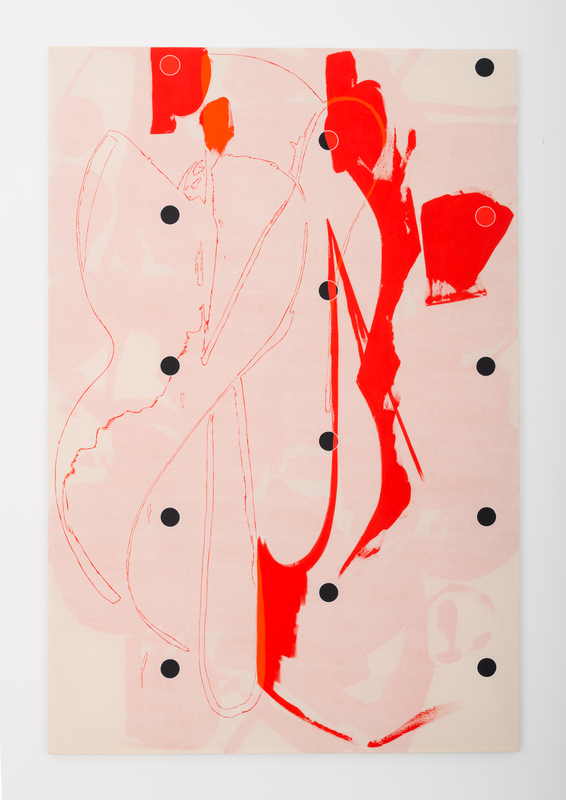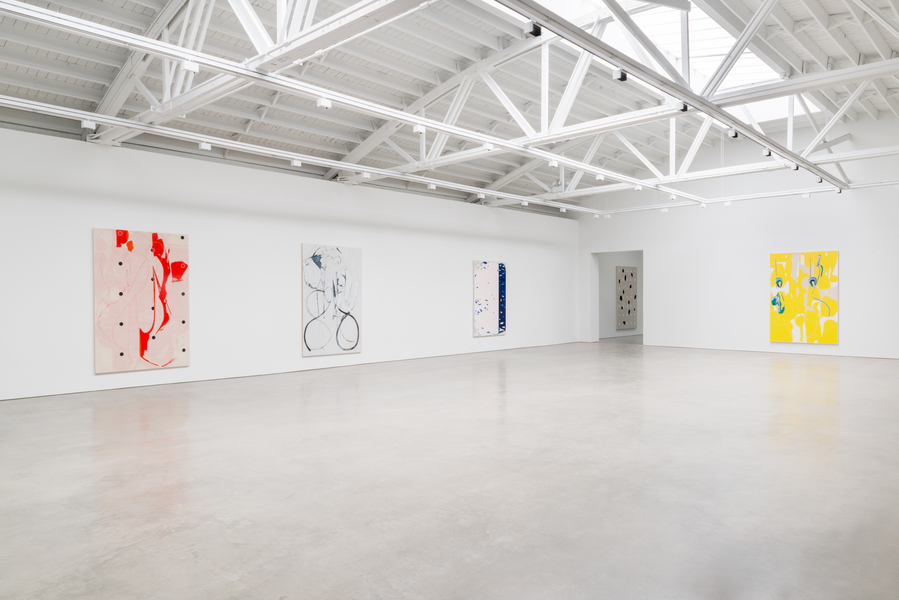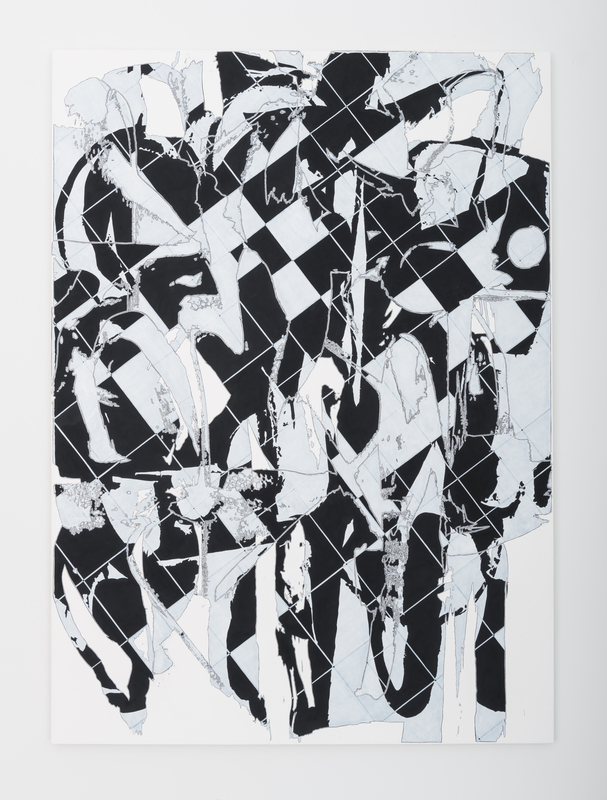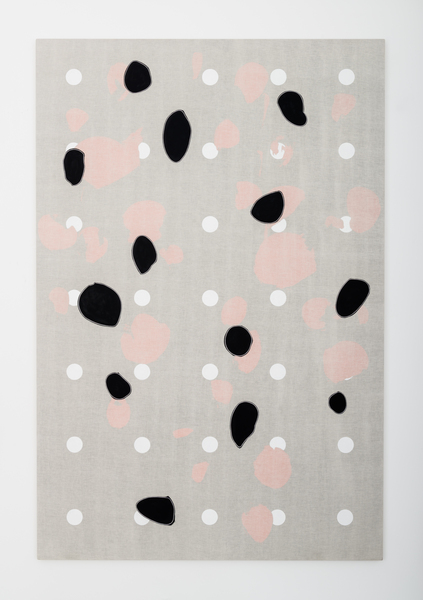Zak Prekop: Shane Campbell Gallery
by Matthew Girson
The paintings of Zak Prekop, most recently on view at Shane Campbell Gallery, stake an odd claim on the tradition of gestural abstraction. The bold vitality that once characterized expressionist gesture goes dry on Prekop’s brushes—its color remains, but is rendered stiff and flat.

Operating at a sober distance from Capital “E” Expressionism—that arm of modernist painting practice that married the physical traces of visceral studio actions (i.e. gestures) with the viscous materiality of paint—the traditions depicted in Prekop’s smart new paintings are pictured in the past tense. In most cases, expressionist gestures once signaled an energized bodily act of painting while also suggesting a symbiotic connection between the maker and the medium; the life force of one necessitated the power and raison d’etre of the other. While Expressionist painting (capital “E”) in modernism was built on expressionist gesture (lower case “e”), Prekop’s work reveals that this old symbiosis is no longer germane to painting today. Though meticulously constructed, Prekop’s work instead leeches the viscerality from gesture, delivering visually compelling paintings with sharp critical value. Their visual satisfaction is delivered where the boundaries of forms intersect and overlap; the critical value comes from their cool sobriety. There’s nothing romantic or overwrought here. Rather, Prekop’s marks alienate the form of expressionist abstraction from the idioms of Expressionism, delivering an intelligent counter to the glut of present day gestural painters searching for some lost energy or life force for painting.

Most of the 84 x 57 inch paintings on view at the gallery began with hearty, full body strokes of color, such as the orange marks in Four Pairs (2016). When the paint dried a sheet of clear mylar was laid over the surface in order to be traced, cut out, and then used as stencils for another set of marks. Following this process, more mylar was applied, and more gestures were made in concert with the developing composition—sometimes overlapping, sometimes abutting the previous strokes. Flat, carefully painted, opaque areas of color were meticulously brushed between the initial marks, or snugly painted within them. Some areas were slowly filled in with uniform surfaces, and others remained linear. In either case, the results desiccate the energized flesh and blood of Expressionism.

In other circles of contemporary painting, ‘zombies’ have been used as a subject of discussion intended to address the lost energy of painting as if the walking dead could deliver some vitality.1 Zombies may be box office gold, and a useful metaphor for life in late capitalism, but such associations in the context of painting are misplaced. While intended to push past the numerous deaths of painting during postmodernity, zombies merely prolong those tired narratives—Prekop’s paintings draw this association explicitly.
Perhaps attempting to usurp some playful after-life rhetoric from photography, we are reminded that the photographic activity of postmodernism was often discussed in terms of ghosts, as modernism—and abstract painting with it—fell.2 In familiar narratives, ghosts are wily, smart and ephemeral. While the presence and absence of ghosts built into the light and shadow of film processes may have been a reasonable association for photography, the mindless and soulless corporeality of zombies does not work for painting. The metaphor more acutely re-enacts the traditions of Expressionism, failing to engage the critical range of painting today.

Prekop’s abstractions reveal how gesture has become more of a weight than a launch pad. Even more pointedly, their comparisons with Abstract Expressionism prove to be more of a stepping stone to walk over than a glorious mountain to honor. By deflating mid-century gestural abstraction and using its tropes with a calculated distance, Prekop’s paintings are more anti-expressive than un-expressive. Operating within the historical field of Expressionism, Prekop ossifies gesture, suggesting that a removal from gesture toward overt artifice may be more viable than the myth of emotion and intuition, its mindless and meaty flesh and bones.
Matthew Girson is a painter.
- See Laura Hoptman’s catalog essay for MoMA’s Forever Now: Contemporary Painting in an Atemporal World. For a deeper view into the rhetoric of zombies in recent painting see: Walter, Robinson, http://www.artspace.com/magazine/contributors/the_rise_of_zombie_formalism. See also Jerry Saltz, “Zombies on the Walls: Why Does So Much New Abstraction Look the Same” at http://www.vulture.com/2014/06/why-new-abstract-paintings-look-the-same.html, Howard Hurst’s “Who Has The Cure for Zombie Formalism,” at http://hyperallergic.com/169198/who-has-the-cure-for-zombie-formalism/, and Thomas Micchelli’s “The Death of Painting: All New, 2014 Edition,” at http://hyperallergic.com/169650/the-death-of-painting-all-new-2014-edition/.
- “In our time, the [photographic] aura has become only a presence, which is to say a ghost.” (Douglas Crimp, “The Photographic Activity of Postmodernism,” October, Vol. 15 (Winter, 1980). See also Camera Lucida by Roland Barthes.